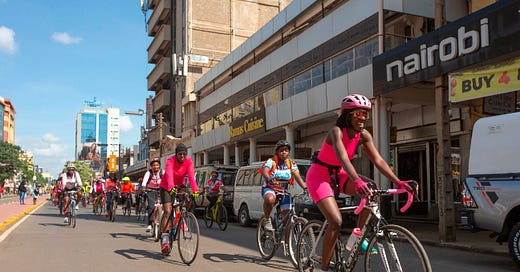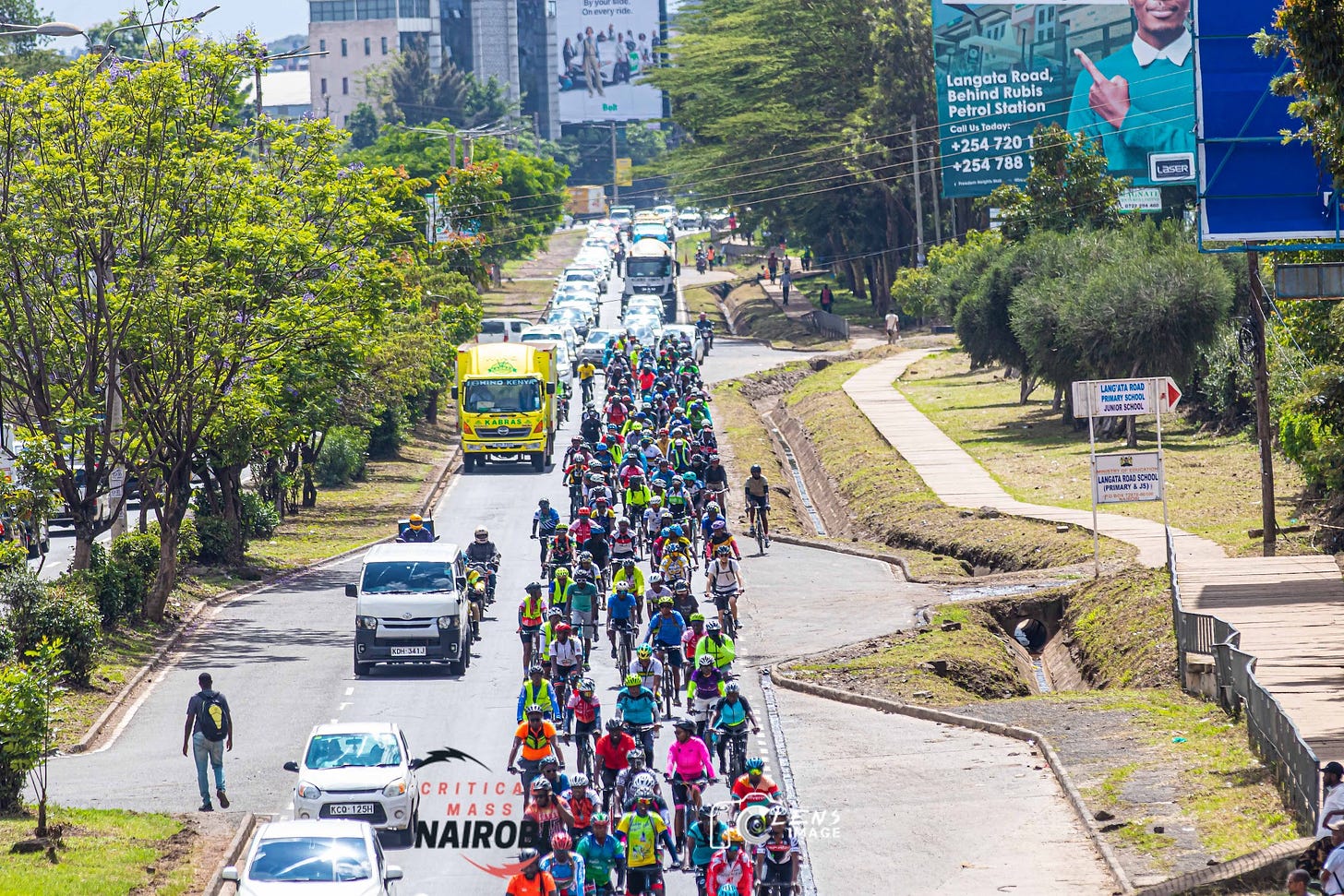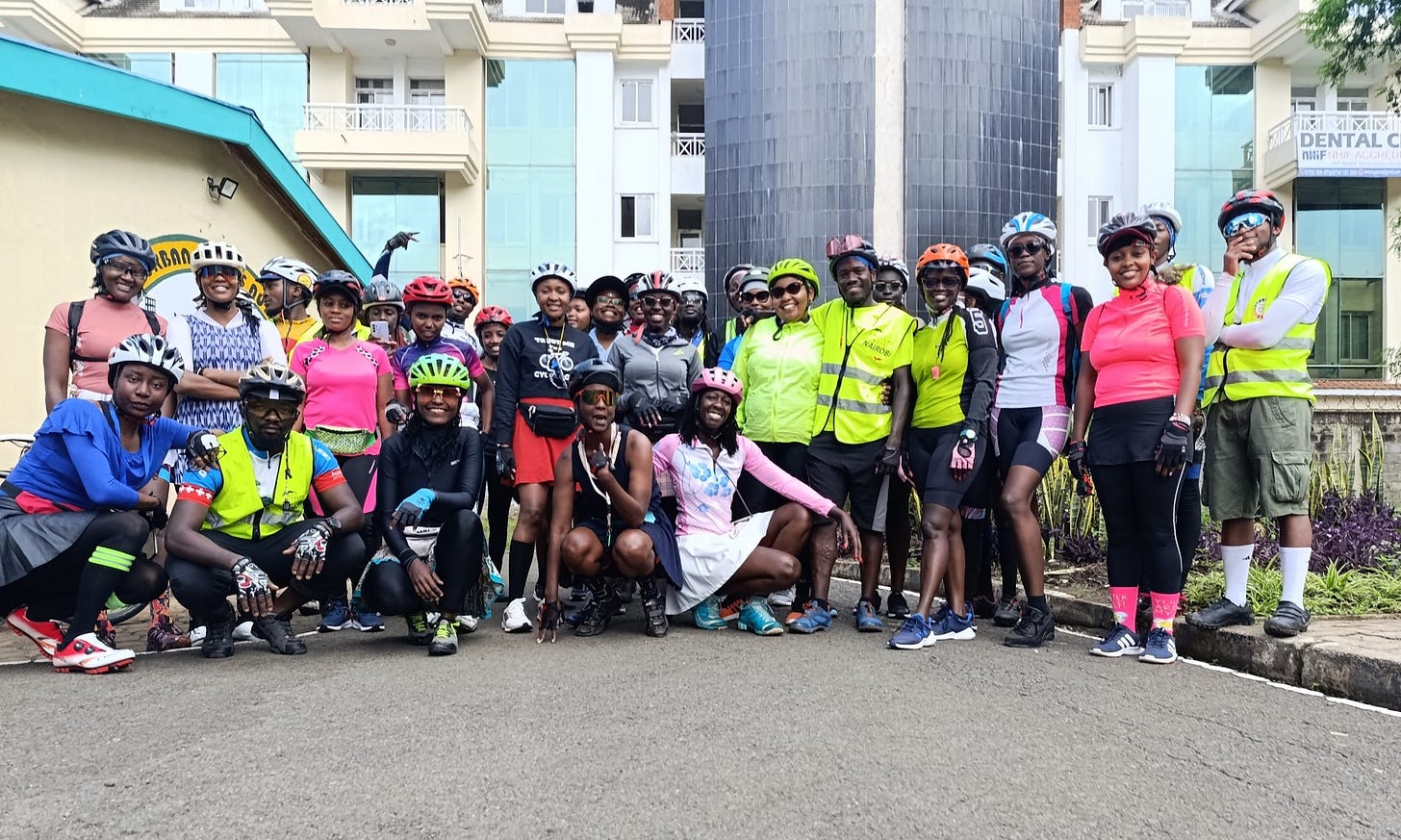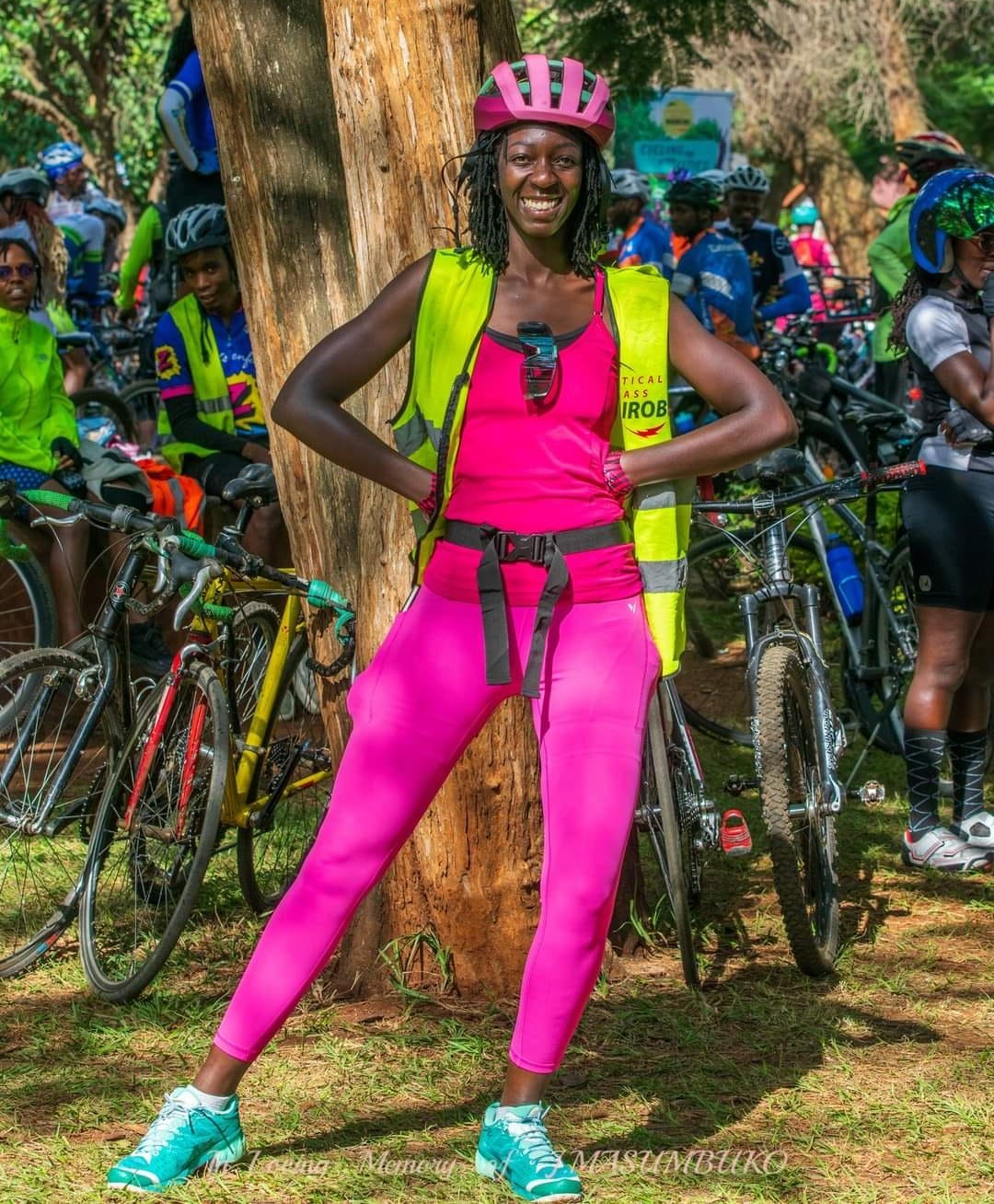Leading The Change: Cyprine Odada And The Impact Of Critical Mass Nairobi
Interview | Perspectives | Nairobi, Kenya
Just a few years ago, in the midst of the bustling chaos of the ever growing Kenyan Capital, you might have been able to spot a few brave cyclists, making their way through the intermingling of cars, Matatus (shared minibus common throughout Kenya), food stalls and pedestrians. However, present day Nairobi seems like a different city and cyclists multiply by the day, taking more and more space on the metropolitan streets.
At the forefront of this transformation are local cycling advocacy groups and activists who have been working tirelessly to promote cycling. One of them is Cyprine Odada, urban planner and head of Critical Mass Nairobi, who the Urban Cycling Institute had the pleasure to interview. She is now leading a cycling transformation in one of the largest cities in Africa. Her incredible work deserves the spotlight, and can teach cities throughout the world about bottom-up approaches to successfully promoting cycling.
Critical Mass Nairobi, a space for everyone
When Cyprine took over the direction of critical mass Nairobi in 2016, the organization was down to a few members and was not well known, “When I started riding with critical mass, I felt like I had found my family, my community, and I wanted to hold on to that”, Cyprine tells the Urban Cycling Institute, adding,“I did not want to lose this wonderful group, and seeing such a few people coming to our rides, which sometimes were even canceled, pushed me to ask the founder to help him out; I had a vision: I wanted Critical Mass to grow, to impact the city and push for policies and infrastructure. After I took a leading role, I found myself doing all kinds of work, from marketing, to social media engagement, to education. It was a lot, but with the help of a fantastic team we have been able to bring hundreds of people to Critical Mass and start incredible projects”.
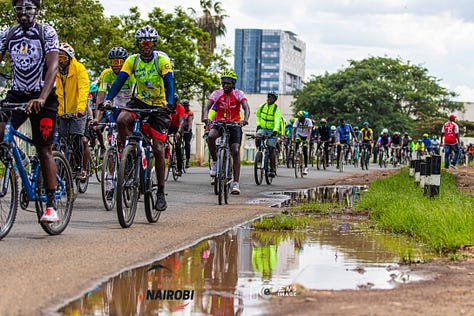
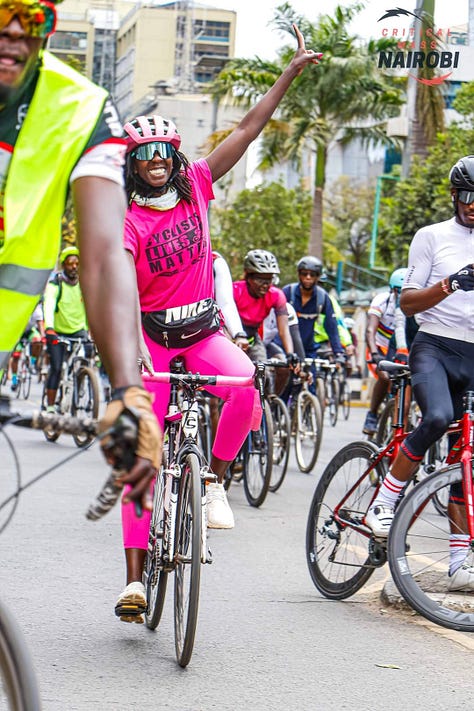
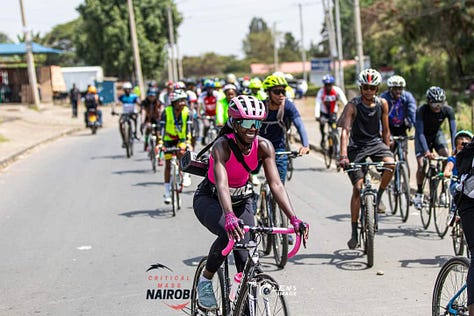
The phenomenon of Critical Masses has boomed since 1992, when the first was held in San Francisco, and nowadays thousands of cities around the world participate in the initiative. But Critical Mass is not simply a monthly gathering of cycling enthusiasts looking to spend some time together, it is a bold statement against car-centricity. By taking up space on the road in large numbers, cyclists become visible, loud, playful, they are at the center of attention, they represent an alternative for those sitting in a car, waiting for the cheering mass to cycle by (Rigal, 2022). In addition, Critical Masses create networks of activism, paving the way for an alternative and collective re-imagination of the road.
“At Critical Mass Nairobi, we ride 28-30 kilometers, although the speed is moderate, it can be difficult to keep up for kids”, points out Cyprine, “and I always found that a pity, which is why I decided to create Nairobi’s version of Kidical Mass, Toto Mass”. Kidical Mass is the child-friendly version of Critical Mass, it is shorter, easier and slower, and it has gained enormous popularity all over the world since the first one was held in Eugene, Oregon, in 2008. Cyprine Odada recognized the importance of including the youngest inhabitants of the city in cycling activism: “Opening public spaces to children is so important, but people need to see children in these public spaces to realize it. Toto Mass is organized for parents and their children, and every time more and more people join us. We have kids with tricycles, moving slowly but joyfully, and I see that this impacts car riders much more! To see young kids taking space on the road, smiling and being so brave, even the car drivers get joyful by seeing them and respect them by seeing them as road users”.
Women are another group that is often under-represented among cyclists around the world, due to feelings of unsafety and socio-cultural concerns. Cyprine, who is never short of ideas, has been dedicating herself to creating a safe space for women within the cycling community:
“I created Kenya Cycling Women, another initiative under Critical Mass Nairobi, to address gender barriers in cycling. Women cyclists often face more challenges, and for me, it is very important to connect them with each other and give them the space they need to learn and get comfortable with cycling. In addition, I also organize events exclusively for women or to support women, for example Skirts on Bikes, to celebrate and empower women cyclists”. It only takes a quick look at the organization’s website to spot the many events dedicated to women, from Pink Women Rides, to charity rides to raise funds for sanitation pads; it seems that at Critical Mass Nairobi nobody is being left behind.
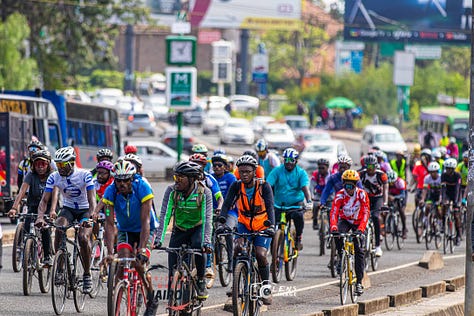
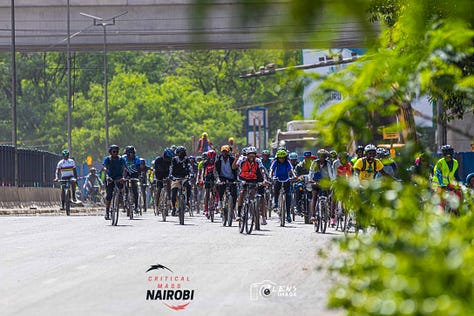
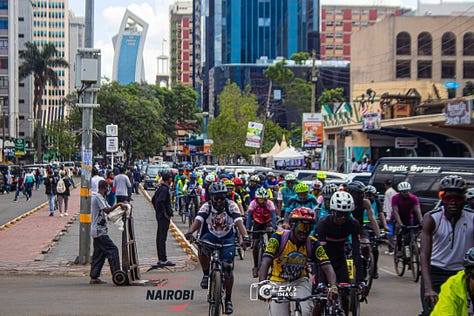
Commuting in Nairobi is a matter of company
The great work of Critical Mass Nairobi in promoting cycling throughout the city is not without challenges: “Most people here cycle for leisure, often during the weekends”, mentions Cyprine, “But the number of cycling commuters has been slowly increasing; there is just so much congestion and time wasted in traffic jams, people are starting to look for alternatives, and we are happy to introduce them to cycling through our work”.
A research by Chatterjee et al. (2018), highlighted that commuting to work or school induces a lower mood than other daily activities, often due to congestion on the road, crowding and the unpredictability of traffic. However, the researchers showed that commuting by walking or cycling can have a positive effect, increasing joy and satisfaction, especially when traveling with company.
For this reason, Critical Mass Nairobi started a program called Nairobi Bike Trains (read about similar initiatives here), aimed at encouraging people to commute together by bike, “We noticed that some of the people who came to Critical Mass were only cycling that one time in a month, despite enjoying it. Many wanted to commute by bike to work, but did not feel safe doing it alone or simply did not know how to begin doing it. With our program, we were able to set up different groups of people who were doing similar routes, giving them the means to cycle safely together; right now, we have 15 Bike Trains, all organized through simple whatsapp groups, and people are eager to start more of them. All it took was talking and listening to local cyclists, recognizing their vision and brainstorming to meet their needs.” Perhaps the most important takeaway is that cycling can offer a unique opportunity to foster social interactions and even commuting can be pleasant when done together.
Nairobi, a valuable example for the world
So far, the future of Nairobi seems bright, a testament to the importance of bottom-up initiatives in cities and to the tireless efforts of advocacy groups.
Perhaps, Nairobi can teach a few things to other cities around the world, “What we have done differently from other cities is creating a sense of community”, says Cyprine, “We have brought strangers together: they meet, they ride together and share personal stories, they are joyful and happy, they bring something new and unexpected to the streets. To me, this is what cycling is all about.” And this is something that no city should ever lose sight of, the importance of creating spaces of social interaction and play, where people can be happy together.
Written by Michela Grasso, Researcher at Urban Cycling Institute
Interested in writing or sponsoring an article? Send us a pitch at media@urbancyclinginstitute.org
Learn more:
A Global Survey of Bike Bus Initiatives: An Interview with Gemma Simón-i-Mas
Travelling together alone and alone together: mobility and potential exposure to diversity
Alternative Mobility Narratives online course
Sources:
Chatterjee, K., Chng, S., Clark, B., Davis, A., De Vos, J., Ettema, D., … Reardon, L. (2019). Commuting and wellbeing: a critical overview of the literature with implications for policy and future research. Transport Reviews, 40(1), 5–34. https://doi.org/10.1080/01441647.2019.1649317
Rigal, A. (2022). Cycling Interaction Rituals in the Conflict against the Car. From the Bike Subculture to the City Scale and Beyond. Applied Mobilities, 8(2), 113–128. https://doi.org/10.1080/23800127.2022.2095482


